Brown birds are some of the most common and widespread birds in the world. They come in many different shades and patterns, and their beauty is often subtle.
Brown birds use their plumage to blend in with their surroundings, making them difficult to spot. Despite their unassuming appearance, brown birds are fascinating creatures with unique characteristics and adaptations that contribute to their survival and ecological role.
You are reading: 15 Types Of Brown Birds
In this article, we will explore 15 types of brown birds, including their distinctive plumage, vocal abilities, and habitat range. Understanding the diverse range of brown birds is essential for researchers and conservationists to develop effective strategies for their protection.
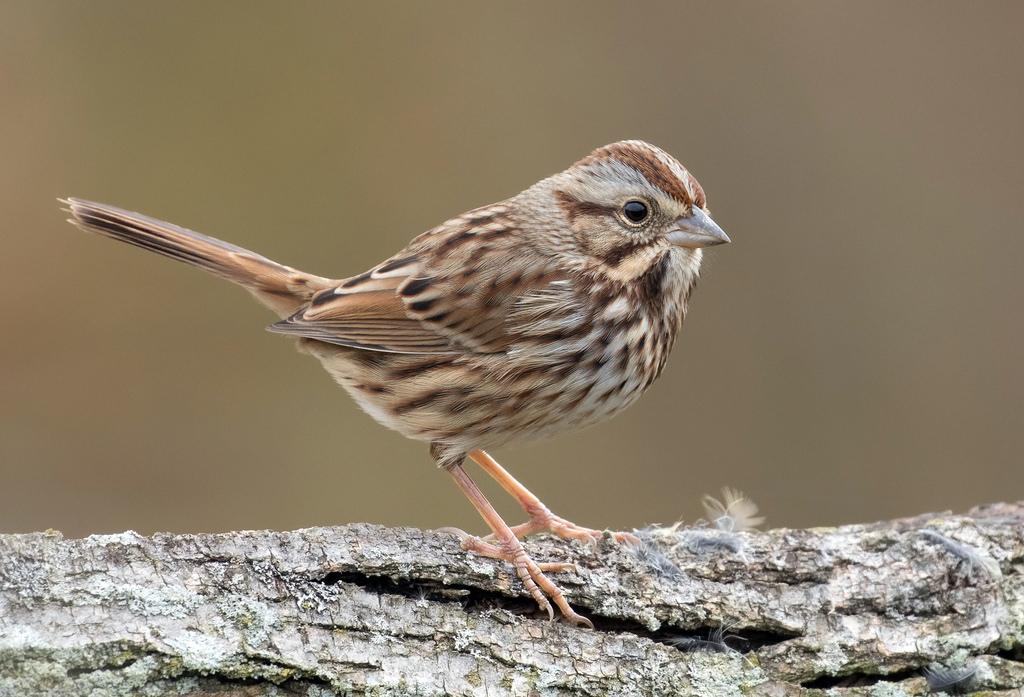
15 Types Of Brown Birds
Little Bunting
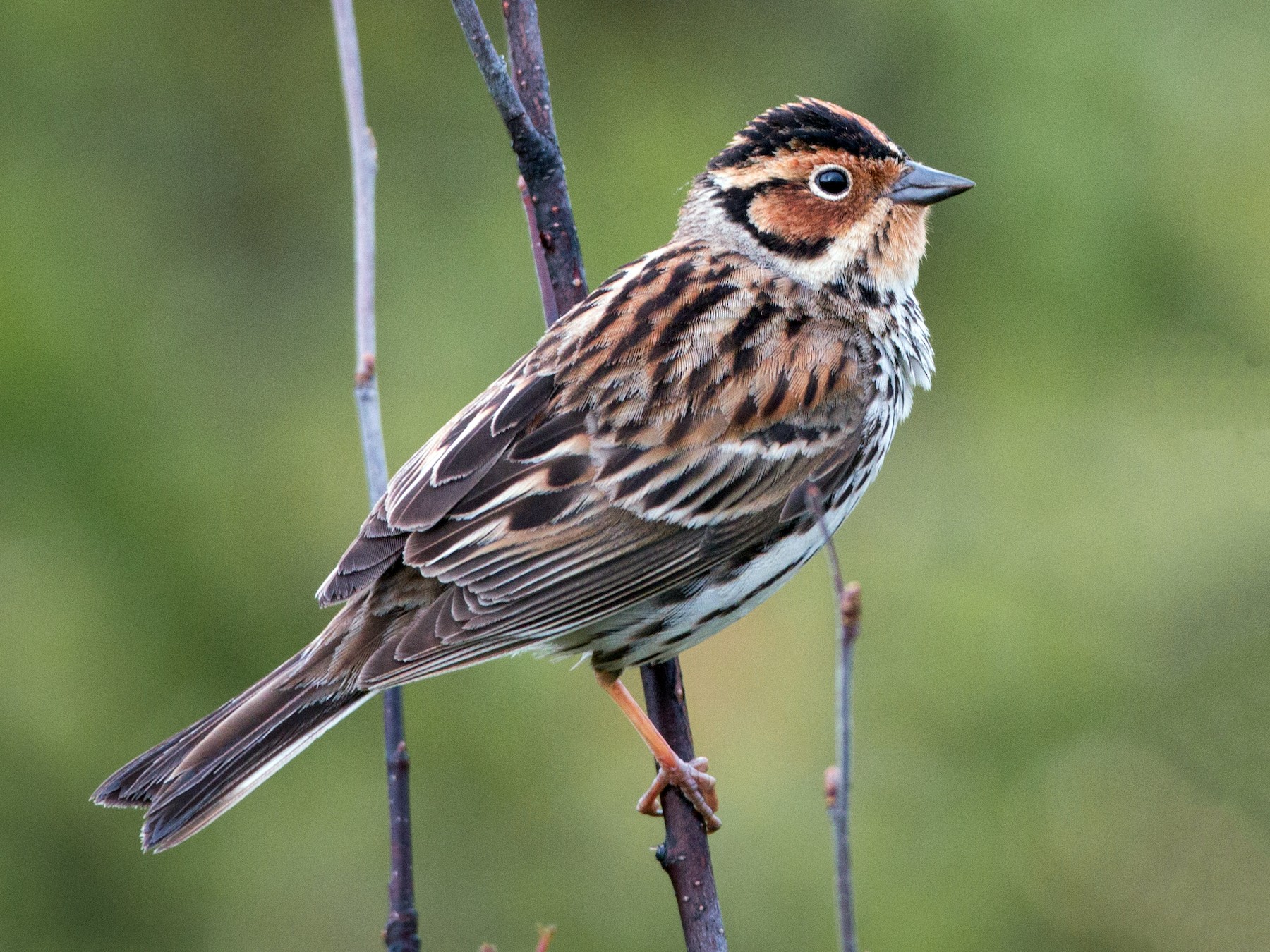
The Little Bunting (Emberiza pusilla) is a small passerine bird belonging to the bunting family (Emberizidae) . It is a monotypic species, with no geographical variation across its extensive Palearctic range.
The Little Bunting breeds across the taiga of the far north-east of Europe and northern Eurosiberia to the Russian Far East. It prefers taiga forests and open tundra with scattered birches and willows, often near water.
During winter, it migrates to subtropical regions in northern India, southern China, and the northern parts of Southeast Asia. The Little Bunting is a rare vagrant to western North America. The bird’s song is a pleasant two- or three-part series of bright, buzzy notes.
Brown Jay
The Brown Jay (Psilorhinus morio) is a large jay native to North and Central America. Here are some key facts about the Brown Jay:
– The Brown Jay is the largest jay seen in North America.
– It is a common and vocal resident of Central America, occurring from the Lower Rio Grande Valley of Texas south to Panama.
– The bird is dark brown overall with white tips on the tail feathers, and a paler grayish belly.
– The Brown Jay is omnivorous, feeding on a wide variety of insects, spiders, small lizards, rodents, eggs, and nestlings of smaller birds.
– The bird prefers to live in tropical and subtropical forests, especially those with dense undergrowth.
The Brown Jay is a fascinating bird with a distinctive appearance and vocal abilities. Its large size and omnivorous diet make it an important part of the ecosystem in which it lives.
Brown Shrike
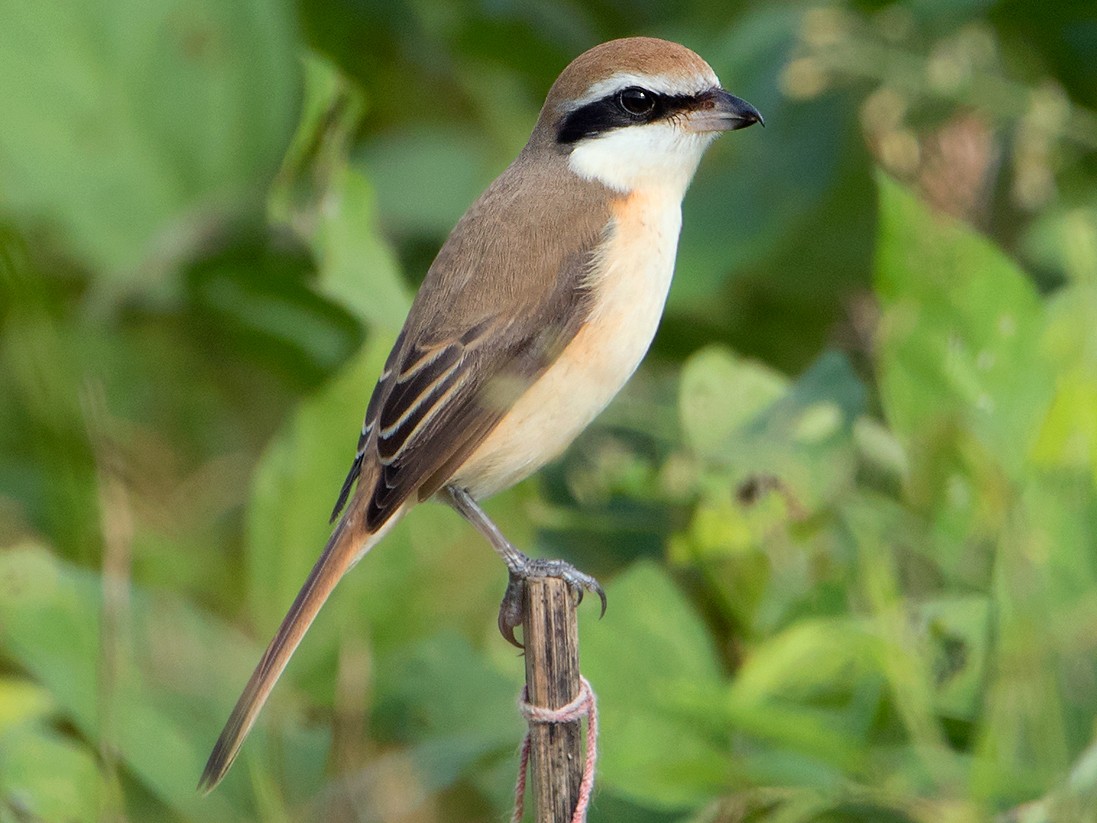
The Brown Shrike (Lanius cristatus) is a bird in the shrike family that is mainly found in Asia. Here are some key facts about the Brown Shrike:
Appearance:
– The Brown Shrike is mainly brown on the upper parts, and the tail is rounded.
– The bird has a black mask that can be paler in winter and has a white brow over it.
– The underside is creamy with rufous flanks and belly.
– The wings are brown and lack any white “mirror” patches.
– Females tend to have fine scalloping on the underside, and the mask is dark brown and not as well marked as in the male.
Habitat and Distribution:
– The Brown Shrike is a migratory species and is found mainly in Asia, breeding primarily in eastern Siberia, China, Mongolia, the Koreas, and Japan.
– The bird is a rare visitor in spring and fall to western and southern Alaska, and has wandered as far south as California a few times.
– The Brown Shrike is a small, migratory shrike, often seen perched in an upright stance.
Behavior and Diet:
– The Brown Shrike is a typical shrike that hunts from perches and impales prey on thorns or barbed wire.
– The bird feeds on insects, small birds, and rodents.
– The Brown Shrike is known for its high fidelity to its wintering sites, often returning to the same locations each winter.
The Brown Shrike is a fascinating bird with distinctive plumage and behavior. Its migratory nature and feeding habits make it an important part of the ecosystem in which it lives.
Canyon Towhee
The Canyon Towhee (Melozone fusca) is a bird of the family Passerellidae. Here are some key facts about the Canyon Towhee:
Appearance:
– Canyon Towhees are large sparrows with fairly long tails, chunky bodies, and short rounded wings.
– The bird’s bill is short and thick at the base, and the legs are long.
– Canyon Towhees have a uniform matte brown body, with a buffy throat and orange undertail coverts.
– The bird also has a reddish-brown crown and messy dark streaks on the back.
Habitat and Distribution:
– Canyon Towhees are native to lower-lying areas from Arizona, southern Colorado, New Mexico, and western Texas south to northwestern Oaxaca, Mexico, mostly avoiding the coasts.
– The bird’s natural habitat is brush or chaparral.
– Canyon Towhees are common in the low brush of dry foothills and canyons in the interior of the Southwest.
Behavior and Diet:
– Canyon Towhees feed on the ground or in low scrub rather than in the tree canopy.
– The bird is often seen in parking lots, where it feeds on insects on the cars’ grilles and takes cover under the cars when necessary.
– Canyon Towhees are common on the ground and underneath shrubs.
The Canyon Towhee is a fascinating bird with distinctive plumage and behavior. Its preference for low scrub and ground-feeding habits make it an important part of the ecosystem in which it lives.
Veery
The Veery (Catharus fuscescens) is a small North American thrush species, belonging to the genus Catharus, which also includes the gray-cheeked thrush, Bicknell’s thrush, Swainson’s thrush, and hermit thrush. Here are some key facts about the Veery:
Appearance:
– Veeries are medium-sized thrushes, smaller than an American Robin but similar in shape.
– The bird has a plump body, round head, a straight, narrow bill, and fairly long wings.
– The Veery’s plumage is reddish-brown on the back and wings, with a white belly and a buffy throat.
– The bird’s eyes are large and dark, and the legs are pinkish-brown.
Habitat and Distribution:
– Veeries breed in the boreal forests of Canada and the northeastern United States, and winter in the Amazon Basin of South America.
– The bird prefers to live in damp, shady forests with a dense understory of shrubs and ferns.
– Veeries are common in deciduous and mixed forests, especially near streams and wetlands.
Behavior and Diet:
– The Veery is a shy bird that is often heard but not seen.
– The bird’s song is a cascade of “veer” notes that make up its ethereal, reedy song—a common sound at dusk and dawn in summer in the forest.
– The Veery feeds mainly on insects during the breeding season, including beetles, ants, small wasps, caterpillars, crickets, and others.
Read more : Can Parakeets Eat Walnuts
The Veery is a fascinating bird with distinctive plumage, vocal abilities, and habitat preferences. Its migratory nature and feeding habits make it an important part of the ecosystem in which it lives.
Hermit Thrush
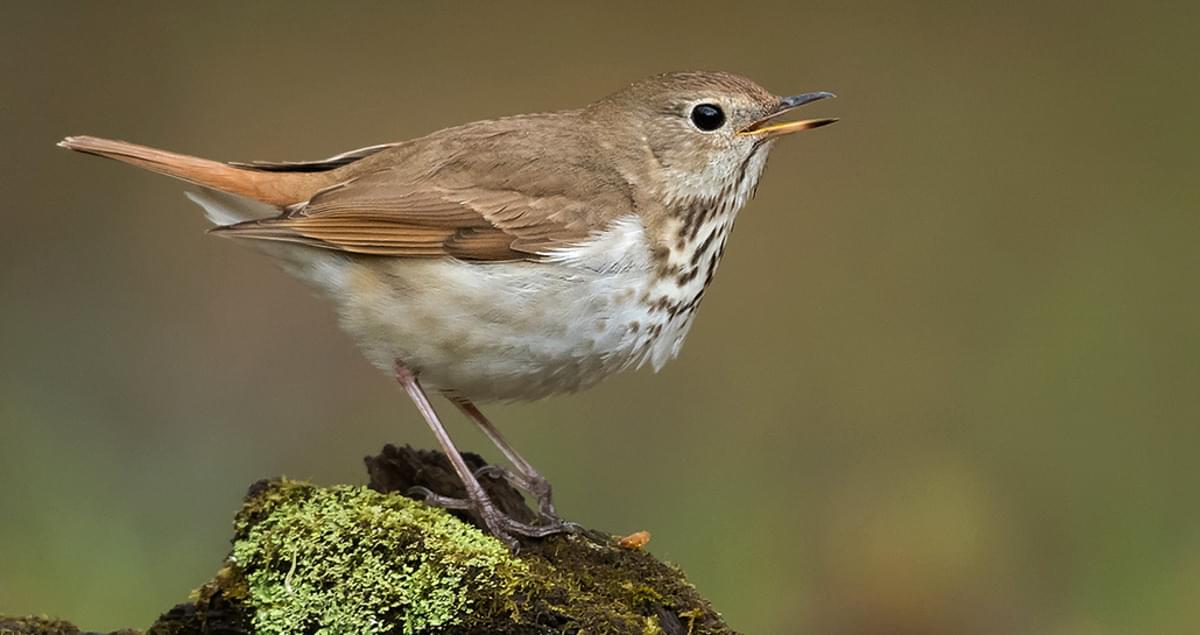
The Hermit Thrush (Catharus guttatus) is a medium-sized North American thrush species that belongs to the family Turdidae. Here are some key facts about the Hermit Thrush:
Appearance:
– Hermit Thrushes have a chunky shape similar to an American Robin, but smaller.
– The bird’s upper body is rich brown, and the breast has smudged spots.
– The Hermit Thrush has a reddish tail that sets it apart from similar species in its genus.
– The bird has a round head, a slender, straight bill, and a white eye ring.
Habitat and Distribution:
– Hermit Thrushes breed in the boreal forests of Canada and the northeastern United States, and winter in the southern United States, Mexico, and Central America.
– The bird prefers to live in damp, shady forests with a dense understory of shrubs and ferns.
– Hermit Thrushes are common in deciduous and mixed forests, especially near streams and wetlands.
Behavior and Diet:
– The Hermit Thrush is a shy bird that is often heard but not seen.
– The bird’s song is a series of clear, flute-like notes that descend in pitch, often heard at dawn and dusk in the forest.
– Hermit Thrushes feed mainly on insects during the breeding season, including beetles, ants, small wasps, caterpillars, crickets, and others.
The Hermit Thrush is a fascinating bird with distinctive plumage, vocal abilities, and habitat preferences. Its migratory nature and feeding habits make it an important part of the ecosystem in which it lives.
Swainson’s Thrush
Swainson’s Thrush (Catharus ustulatus) is a medium-sized thrush that belongs to the genus Catharus. Here are some key facts about the Swainson’s Thrush:
Appearance:
– Swainson’s Thrushes are medium-sized thrushes with a slim body, round head, and short, straight bill.
– The bird’s upper body is reddish-brown, and the breast has smudged spots.
– Swainson’s Thrush has a buffy eye ring and a buffy spectacled look.
– The bird’s wings are fairly long, and the tail is medium-length.
Habitat and Distribution:
– Swainson’s Thrush breeds in the boreal forests of Canada and the northeastern United States, and winters in South America.
– The bird prefers to live in damp, shady forests with a dense understory of shrubs and ferns.
– Swainson’s Thrushes are common in deciduous and mixed forests, especially near streams and wetlands.
Behavior and Diet:
– Swainson’s Thrushes feed mainly on insects, including mosquitoes, during the breeding season.
– The bird is known for its beautiful, ascending flute-like voice, which can be heard in the forest during the breeding season.
– Swainson’s Thrushes become numerous across most of forested North America during migration in spring and fall.
The Swainson’s Thrush is a fascinating bird with distinctive plumage, vocal abilities, and habitat preferences. Its migratory nature and feeding habits make it an important part of the ecosystem in which it lives.
House Sparrow
The House Sparrow (Passer domesticus) is a small bird belonging to the sparrow family Passeridae, found in most parts of the world. Here are some key facts about the House Sparrow:
Appearance:
– House Sparrows are small birds with a typical length of 16 cm and a mass of 24–39.5 g.
– Females and young birds are colored pale brown and gray, and males have a brown back and wings, black bib, and gray underparts.
– The bird has a round head, a stout bill, and short legs.
Habitat and Distribution:
– The House Sparrow is strongly associated with human habitation and can live in urban or rural settings.
– Though found in widely varied habitats and climates, it typically avoids extensive woodlands, grasslands, polar regions, and hot, dry deserts far away from human development.
– House Sparrows are common in cities, towns, and farms, and are essentially always found around manmade structures, never in unaltered natural habitats.
Behavior and Diet:
– House Sparrows routinely feed at home and public bird feeding stations, but naturally feed on the seeds of grains, flowering plants, and weeds.
– The bird takes frequent dust baths, throwing soil and dust over its body feathers, just as if it were bathing with water.
– House Sparrows are frequent visitors to backyard feeders, where they eat most kinds of birdseed, especially millet, corn, and sunflower seed.
The House Sparrow is a fascinating bird with distinctive plumage, habitat preferences, and behavior. Its association with human habitation and adaptability to a wide range of conditions make it a successful species in most parts of the world where it has been introduced.
European Starling
The European Starling (Sturnus vulgaris) is a medium-sized passerine bird in the starling family, Sturnidae. Here are some key facts about the European Starling:
Appearance:
– European Starlings are stocky black birds with short tails, triangular wings, and long, pointed bills.
– The bird has glossy black plumage with a metallic sheen, which is speckled with white at some times of year.
– The legs are pink, and the bill is black in winter and yellow in summer; young birds have browner plumage than the adults.
Habitat and Distribution:
– European Starlings are native to Europe, Asia, and northern Africa, but have been introduced to many parts of the world, including North America.
– The bird is common around cities and towns, and is often found in lawns, city parks and squares, and fields.
– European Starlings are abundant in the United States, where they were introduced in the late 1800s.
Behavior and Diet:
– European Starlings are omnivorous and feed on a wide variety of insects, fruits, and seeds.
– The bird is known for its boisterous, loud behavior and travels in large groups, often with blackbirds and grackles.
– European Starlings are frequent visitors to backyard feeders, where they eat most kinds of birdseed, especially millet, corn, and sunflower seed.
The European Starling is a fascinating bird with distinctive plumage, habitat preferences, and behavior. Its adaptability to a wide range of conditions and omnivorous diet make it a successful species in most parts of the world where it has been introduced.
American Crow
The American Crow (Corvus brachyrhynchos) is a large passerine bird species of the family Corvidae. Here are some key facts about the American Crow:
Appearance:
– American Crows are all black, even the legs and bill.
– The bird has a squared-off or slightly rounded tail, a stout, pointed black bill with a slight hook at the end, and strong black legs and toes.
– American Crows are nearly identical in looks to the fish crow, but can be distinguished by their calls.
Habitat and Distribution:
– American Crows are found throughout much of North America, from Canada through the continental United States.
– The bird is a year-round resident in most of its range, breeding in the northernmost part of its range but may travel a bit further south for the winter.
– American Crows are highly adaptable and can be found in a wide variety of habitats, including woodlands, farms, fields, river groves, shores, towns, and even cities.
Behavior and Diet:
– American Crows are highly vocal birds, with a complex system of loud, harsh caws that they use to communicate with each other.
– The bird is a highly intelligent bird, a quick learner, and a good problem-solver.
– American Crows are omnivorous and feed on a wide variety of insects, fruits, and seeds, as well as carrion and garbage.
The American Crow is a fascinating bird with distinctive plumage, habitat preferences, and behavior. Its adaptability to a wide range of conditions and omnivorous diet make it a successful species in most parts of North America where it is found.
Great Horned Owl
The Great Horned Owl (Bubo virginianus) is a large owl native to the Americas, and is the most widely distributed true owl in the Americas. Here are some key facts about the Great Horned Owl:
Appearance:
– The Great Horned Owl is a large, stocky owl with a wingspan of up to 5 feet.
– The bird has a distinctive appearance, with long ear tufts, a white throat patch, and yellow eyes.
– Great Horned Owls are all black, even the legs and bill.
Habitat and Distribution:
– Great Horned Owls are found throughout much of North America, from Canada through the continental United States.
– The bird is a year-round resident in most of its range, breeding in the northernmost part of its range but may travel a bit further south for the winter.
– Great Horned Owls are highly adaptable and can be found in a wide variety of habitats, including woodlands, farms, fields, river groves, shores, towns, and even cities.
Behavior and Diet:
– Great Horned Owls are fierce predators that can take large prey, including raptors such as Ospreys, Peregrine Falcons, Prairie Falcons, and other owls.
– The bird also eats much smaller items such as rodents, frogs, and scorpions.
– Great Horned Owls have large eyes, pupils that open widely in the dark, and retinas containing many rod cells for excellent night vision.
The Great Horned Owl is a fascinating bird with distinctive plumage, habitat preferences, and behavior. Its adaptability to a wide range of conditions and omnivorous diet make it a successful species in most parts of North America where it is found.
Downy Woodpecker
The Downy Woodpecker (Dryobates pubescens) is a small species of woodpecker, the smallest in North America, with a length ranging from 14 to 18 cm (5.5 to 7.1 in) . Here are some key facts about the Downy Woodpecker:
Appearance:
– Downy Woodpeckers are small birds with a straight, chisel-like bill, blocky head, wide shoulders, and straight-backed posture as they lean away from tree limbs and onto their tail feathers.
– The bird has a black and white plumage, with a white throat, black wings with white spots, and a white stripe down the back.
– The bill tends to look smaller for the bird’s size than in other woodpeckers.
Habitat and Distribution:
– Downy Woodpeckers primarily live in forested areas throughout the United States and Canada, with the exception of deserts in the southwest and the northern tundra.
– The bird nests in tree cavities and feeds primarily on insects, although it supplements its diet with seeds and berries.
– Downy Woodpeckers are common and widespread across much of North America, and are often found in woodlots, residential areas, and city parks.
Behavior and Diet:
– Downy Woodpeckers are often acrobatic foragers, and are at home on tiny branches or balancing on slender plant galls, sycamore seed balls, and suet feeders.
– The bird is known for its characteristic high-pitched pik note and the descending whinny call.
– Downy Woodpeckers are able to forage for food where heavier woodpeckers can’t, including on the slender upper branches of trees and shrubs and on weed stems.
The Downy Woodpecker is a fascinating bird with distinctive plumage, habitat preferences, and behavior. Its small size and acrobatic foraging habits make it an important part of the ecosystem in which it lives.
Carolina Wren
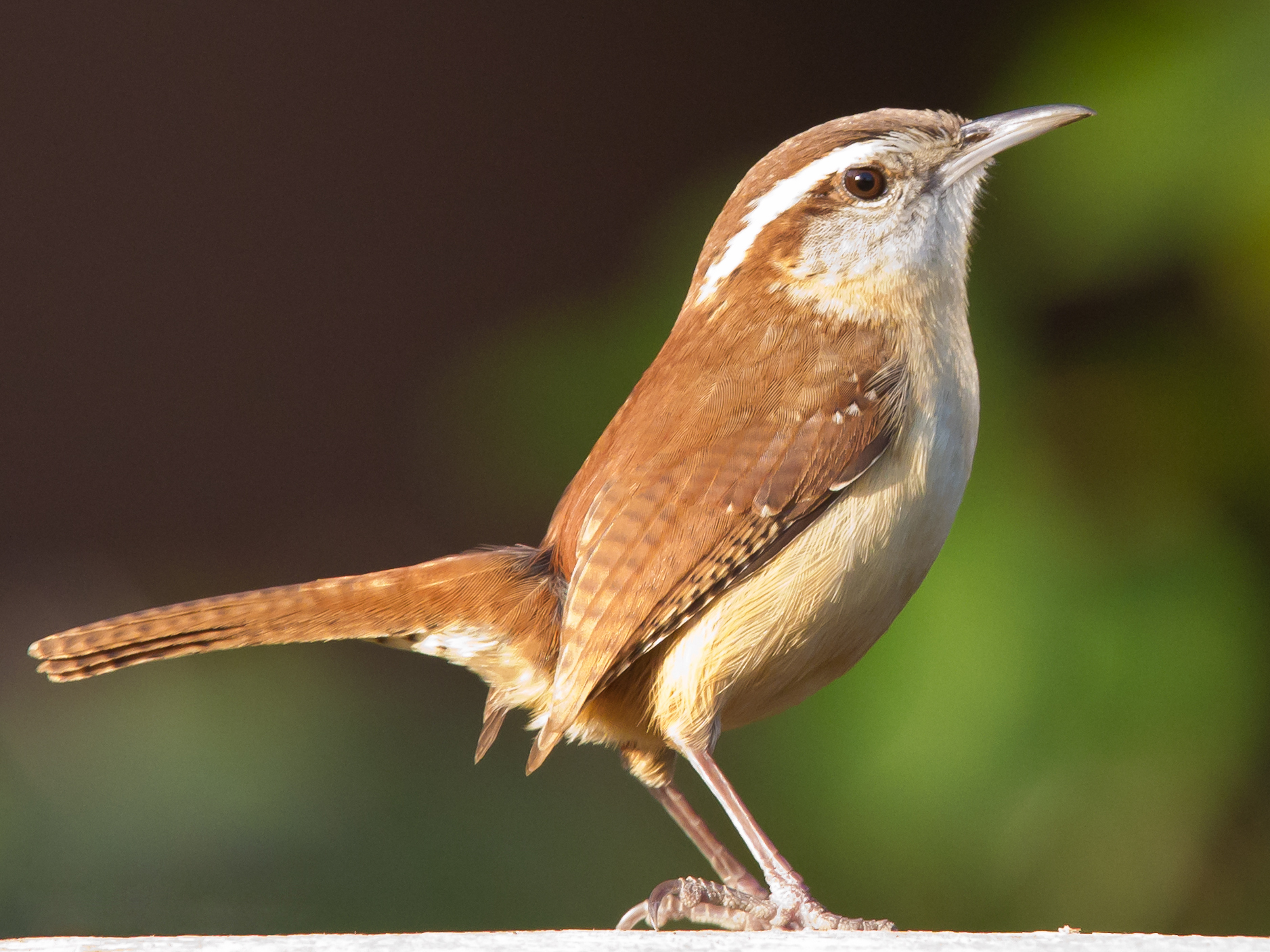
The Carolina Wren (Thryothorus ludovicianus) is a small but chunky bird with a round body and a long tail that it often cocks upward. Here are some key facts about the Carolina Wren:
Appearance:
– The Carolina Wren has a large head with very little neck, and a distinctive bill that is long, slender, and downcurved.
– The bird is warm brown above and buffy-orange below, with a slightly decurved bill.
– The tail is about as long as the body and often cocked up.
Habitat and Distribution:
– Carolina Wrens are resident in the eastern half of the United States of America, the extreme south of Ontario, Canada, and the extreme northeast of Mexico.
– The bird’s preferred habitat is in dense cover in forest, farm edges, and suburban areas.
– Carolina Wrens are common in brushy areas along forest and field edges, and in swamps and suburban areas.
Behavior and Diet:
– Carolina Wrens are known for their loud, piercing teakettle-teakettle song emanating from woody or thickly vegetated areas within the wren’s range.
– The bird is omnivorous and feeds on insects, spiders, and other small invertebrates, as well as fruits and seeds.
– Carolina Wrens often come to backyards if food is available and will visit suet-filled feeders in winter.
The Carolina Wren is a fascinating bird with distinctive plumage, habitat preferences, and behavior. Its adaptability to a wide range of conditions and omnivorous diet make it a successful species in much of the eastern United States where it is found.
Brown Creeper
The Brown Creeper (Certhia americana) is a small songbird and the only North American member of the treecreeper family Certhiidae. Here are some key facts about the Brown Creeper:
Appearance:
– Brown Creepers are small birds, measuring 11.7 to 13.5 cm in length and weighing 7.2 to 9.9 g.
– The bird has a mottled brown and white plumage that makes it nearly indistinguishable from a piece of bark when viewed at a distance.
– Brown Creepers have dark-brown upperparts that are heavily streaked with white on the head, back, scapulars (feathers covering the shoulder), and wings.
– The bird has a distinctive brown stripe through its eye and a white stripe above it, and its underparts are white with red/brown lightly mixed in.
Habitat and Distribution:
– Brown Creepers are found throughout North America, from Canada and Alaska to as far south as northern Nicaragua.
– The bird’s preferred habitat is in dense cover in forest, farm edges, and suburban areas.
– Brown Creepers are common in brushy areas along forest and field edges, and in swamps and suburban areas.
Behavior and Diet:
– Brown Creepers are known for their acrobatic foraging habits, climbing up tree trunks and branches in a spiral pattern while searching for insects.
– The bird is often heard before it is seen, with a high, thin call note that can alert observers to its presence.
– Brown Creepers feed mainly on insects, spiders, and other small invertebrates, as well as seeds and berries.
The Brown Creeper is a fascinating bird with distinctive plumage, habitat preferences, and behavior. Its small size and acrobatic foraging habits make it an important part of the ecosystem in which it lives.
Song Sparrow
The Song Sparrow (Melospiza melodia) is a medium-sized New World sparrow and one of the most abundant, variable, and adaptable species among the native sparrows in North America. Here are some key facts about the Song Sparrow:
Appearance:
– Song Sparrows are small birds with a length ranging from 12 to 17 cm and a weight ranging from 7.2 to 9.9 g.
– The bird has a mottled brown and white plumage with dark streaks that form a central chest spot.
– Song Sparrows have a brown head with a whitish or grayish crown stripe and eye stripe, and a long, rounded tail.
Habitat and Distribution:
– Song Sparrows are found throughout most of North America, with the highest density population in the midwestern Great Lakes region.
– The bird’s preferred habitat is in dense cover in forest, farm edges, and suburban areas.
– Song Sparrows are common in brushy areas along forest and field edges, and in swamps and suburban areas.
Behavior and Diet:
– Song Sparrows are known for their melodious song, which consists of three to four short notes followed by a varied trill.
– The bird is omnivorous and feeds on insects, spiders, and other small invertebrates, as well as seeds and berries.
– Song Sparrows often defend only small nesting territories, so high densities of the bird may be present in good habitat.
The Song Sparrow is a fascinating bird with distinctive plumage, habitat preferences, and behavior. Its adaptability to a wide range of conditions and omnivorous diet make it a successful species in most parts of North America where it is found.
FAQS
1. What are some common brown birds found in North America?
Some common brown birds found in North America include the Brown Thrasher, Wood Thrush, Northern Mockingbird, Black-billed Magpie, House Sparrow, European Starling, American Crow, Great Horned Owl, Downy Woodpecker, Carolina Wren, Brown Creeper, and Song Sparrow.
2. What is the habitat preference of the Brown Creeper?
The Brown Creeper prefers dense cover in forest, farm edges, and suburban areas.
3. What is the size of the Downy Woodpecker?
The Downy Woodpecker is a small bird with a length ranging from 14 to 18 cm (5.5 to 7.1 in).
4. What is the distinctive feature of the Carolina Wren’s bill?
The Carolina Wren has a distinctive bill that is long, slender, and downcurved.
5. What is the behavior of the Great Horned Owl?
The Great Horned Owl is a fierce predator that can take large prey, including raptors such as Ospreys, Peregrine Falcons, Prairie Falcons, and other owls.
6. What is the song of the Song Sparrow?
The Song Sparrow is known for its melodious song, which consists of three to four short notes followed by a varied trill.
7. What is the distribution of the Brown Creeper?
The Brown Creeper is found throughout North America, from Canada and Alaska to as far south as northern Nicaragua.
8. What is the habitat preference of the European Starling?
The European Starling is strongly associated with human habitation and can live in urban or rural settings.
9. What is the size of the American Crow?
The American Crow is a large bird with a wingspan of up to 5 feet.
10. What is the behavior of the House Sparrow?
The House Sparrow is often found around manmade structures and is a frequent visitor to backyard feeders, where it eats most kinds of birdseed, especially millet, corn, and sunflower seed.
Source: https://petstutorial.com
Category: Birds










